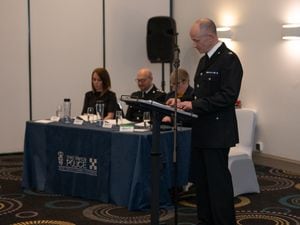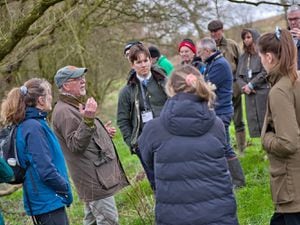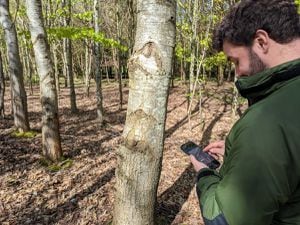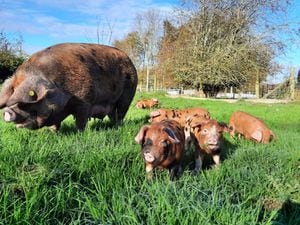Grazing regime keeps beef enterprise on road to profit
The 2013 BeefExpo organisers had arranged three contrasting visits to Herefordshire beef producers.
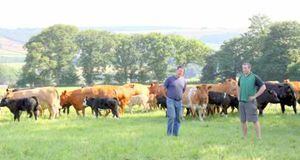

The first was to Oakchurch where the visitors were able to see the Charolais and Aberdeen Angus herds which was established in 2002. That was followed by a visit to the famed Haven herd of pedigree Herefords which can be traced back to 1822.
The last visit was to the Davies family business at Upper Court Clifford, which has been farmed by the family since 1944, with additional land having been added since.
Much of land is in the Wye Valley close to Hay-on-Wye and is run by the family partnership of Will, his wife Carol and son Tom and his wife Julie. Tom is responsible for the arable cropping, with the cattle managed on a daily basis by Phillip Price.
The visit was a complete contrast to the other visits as it based on a commercial cross bred suckler herd of 220 producing finished bulls and heifers.
The partnership farm around 1,200 acres, of which some 630 acres are in combinable crops, 40 acres of maize for silage, plus 140 acres of rented grass keep giving a total of 480 acres of grass, some of which is in two or three year leys integrated into the arable cropping, with 40 acres let each year to a potato grower.
Producing cattle from a grass and forage regime goes back to Alwyn Davies, Will's father when the farm in the 60s became one of the ICI recorded farms. At that time the cattle enterprise was based on buying and rearing good quality Hereford cross Friesian heifers, which were sold in-calf to go into suckler herds.
The system was based on improved grassland management integrating improved grazing and better quality silage with minimal cereal based feed using dairy cross calves.
That system was eventually phased out due to the difficulty of sourcing good quality heifers when the influence of the Holstein became apparent. So for some time they bought and finished store cattle. But in 1998 they purchased a herd of 90 South Devon cows and their calves from Dartmoor.
The cows were then run with a Limousin bull, with the best heifers retained and put to a Belgium Blue bull. Their offspring were put back to a Limousin bull. Since then the cows have been crossed with Blue or Limousin bulls, which Will says produce the best suckler cows.
Since 2012 a Charolais bull has been used to introduce fresh genetics and an Aberdeen Angus is used on the heifers for easier calving. Calving is split between autumn and spring, with some 30 heifers being retained each year to go into the herd. All bulls purchased are performance tested.
As well as finishing their own calves the Davies family buys 100 or more store cattle each year to finish with the number purchased adjusted to yard space and feed availability, giving a total through-put of around 300 finished cattle sold annually.
To boost forage production and improve the quality of grazing and silage, over the last few years the policy has been to introduce two and three year leys and some longer term re-seeds, some leys being integrated into the arable land.
Around 180 acres of first cut silage goes into the pit, which provides some good regrowth for grazing in mid-summer. A small area of second cut silage is baled and around 40 acres of maize is grown for silage.
The finishing cattle are fed on a carefully formulated total mixed diet to improve feed efficiency and carcase quality. The ration is based on grass and maize silage, rolled wheat and barley plus a little chopped wheat straw, with some added yeast and proprietary ingredients aimed at achieving high growth rates of around 1.65Kgs per day.
The finished cattle are sold dead-weight to APB with the bulls finishing at around 16 months and the heifers between 22 and 24 months

